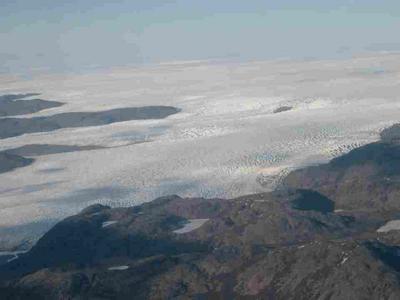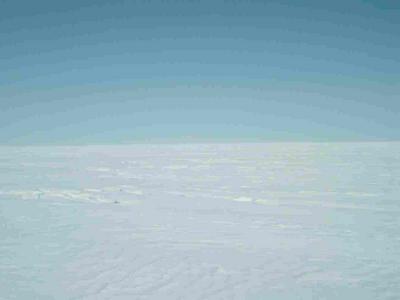11 May, 2003
Snow and Ice – The native peoples of Greenland, the Greenlanders, have more than 25 different terms for ice and more than 100 different terms for snow.
Ice in the form of ice caps and glaciers occupies about 10% of the world’s total land area and stores approximately 75% of the world’s freshwater. Most of the ice is in polar regions like Greenland and Antarctica. The Greenland ice cap is the second largest in the world and contains1/8th of the total global ice mass and the massive ice cap that covers Antarctica contains 9/10ths of the total global ice mass. Greenland is 95% covered with ice. This is about 14 times the size of England covered in ice!
The ice found in Greenland is the result of the annual accumulation of snow. As the layers of precipitation build up they become closely packed under the accumulated weight and the air is eventually squeezed out. In other words the ice becomes more and more dense the deeper you go in the ice sheet until it reaches the density of solid ice.
There are 2 basic zones in the Greenland ice cap. In areas where annual precipitation as snow is higher than annual melting and evaporation, ice accumulates and this region is called the accumulation zone. Around the margins, annual melting and evaporation is higher than annual precipitation so there is a new loss of ice and this region is called the ablation zone. The equilibrium line is where these two zones meet. The highest point on the Greenland ice cap is called Summit and is 11,000 feet high (ice about 2 miles thick)!
As we fly over the ablation zone we can see where lakes and rivers form on the surface of the ice during the summer melt season.

Ablation zone of the Greenland ice cap.

Typical view of the accumulation zone - white for as far as you can see in every direction.
Contact the TEA in the field at
.
If you cannot connect through your browser, copy the
TEA's e-mail address in the "To:" line of
your favorite e-mail package.
|
